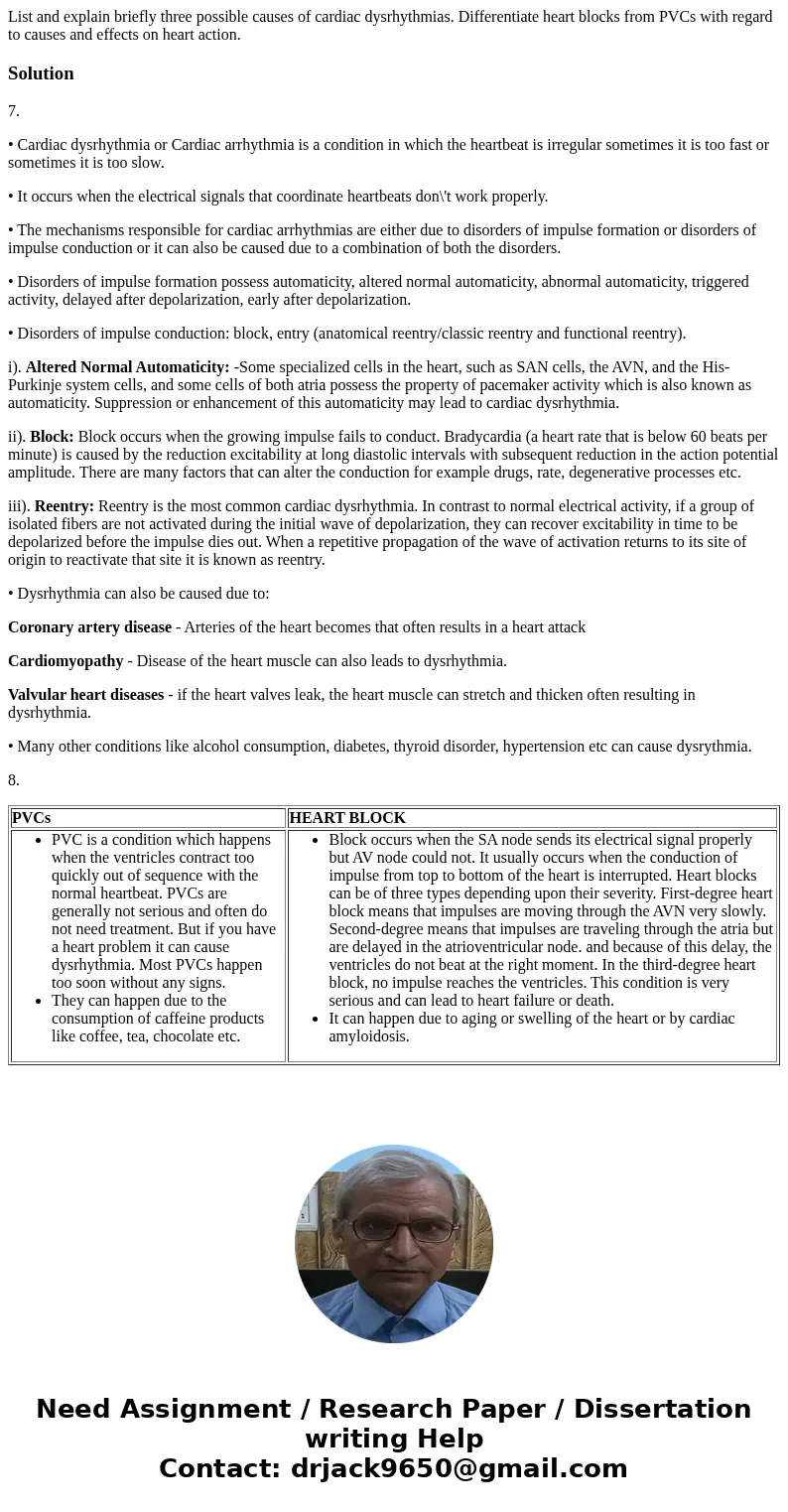List and explain briefly three possible causes of cardiac dy
Solution
7.
• Cardiac dysrhythmia or Cardiac arrhythmia is a condition in which the heartbeat is irregular sometimes it is too fast or sometimes it is too slow.
• It occurs when the electrical signals that coordinate heartbeats don\'t work properly.
• The mechanisms responsible for cardiac arrhythmias are either due to disorders of impulse formation or disorders of impulse conduction or it can also be caused due to a combination of both the disorders.
• Disorders of impulse formation possess automaticity, altered normal automaticity, abnormal automaticity, triggered activity, delayed after depolarization, early after depolarization.
• Disorders of impulse conduction: block, entry (anatomical reentry/classic reentry and functional reentry).
i). Altered Normal Automaticity: -Some specialized cells in the heart, such as SAN cells, the AVN, and the His-Purkinje system cells, and some cells of both atria possess the property of pacemaker activity which is also known as automaticity. Suppression or enhancement of this automaticity may lead to cardiac dysrhythmia.
ii). Block: Block occurs when the growing impulse fails to conduct. Bradycardia (a heart rate that is below 60 beats per minute) is caused by the reduction excitability at long diastolic intervals with subsequent reduction in the action potential amplitude. There are many factors that can alter the conduction for example drugs, rate, degenerative processes etc.
iii). Reentry: Reentry is the most common cardiac dysrhythmia. In contrast to normal electrical activity, if a group of isolated fibers are not activated during the initial wave of depolarization, they can recover excitability in time to be depolarized before the impulse dies out. When a repetitive propagation of the wave of activation returns to its site of origin to reactivate that site it is known as reentry.
• Dysrhythmia can also be caused due to:
Coronary artery disease - Arteries of the heart becomes that often results in a heart attack
Cardiomyopathy - Disease of the heart muscle can also leads to dysrhythmia.
Valvular heart diseases - if the heart valves leak, the heart muscle can stretch and thicken often resulting in dysrhythmia.
• Many other conditions like alcohol consumption, diabetes, thyroid disorder, hypertension etc can cause dysrythmia.
8.
| PVCs | HEART BLOCK |
|
|

 Homework Sourse
Homework Sourse